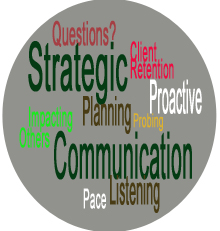
What we say, how we say it, how we look when we say it, and how much we “talk” versus “listen” are all important components of communication.
The question is, are we truly aware of all these factors?
In a recent article published by the Harvard Business Review, authors Oliver Hauser and Michael Luca suggest, “Good communication requires experimenting with your language.”
Their perspective is, quite simply, that intentionally testing or experimenting can drive more successful communication and also create a culture of learning and innovation.
The article shares the following example, in which delinquent taxpayers received one of the following two letters in the mail:
Letter 1: We are writing to inform you that we have still not received your tax payment of $5,000. It is imperative that you contact us.
Letter 2: We are writing to inform you that we have still not received your tax payment of $5,000. By now, 9 out of 10 people in your town have paid their taxes. It is imperative that you contact us.
In their case study, Letter 1 had been used for many years without question. But as it turned out, testing its effectiveness by conducting a test of both letters revealed that Letter 2 was significantly more successful.
The authors also point out that, not only is the practice of experimenting a proven way to improve communication, but also that situations like the tax letter — where we just do the same thing over and over again without asking if it’s really effective — are very common.
So circling-back to our opening paragraph, we might ask ourselves how often we “test” the effectiveness of:
- What we say (word choice)
- How we say it (voice tone)
- How we look when we say it (non-verbal communication or body language)
- Our talk / listen ratio
If the HBR article is on point (as we strongly believe it is), this testing will most likely improve the impact and results of our communication with colleagues, customers, and the marketplace.